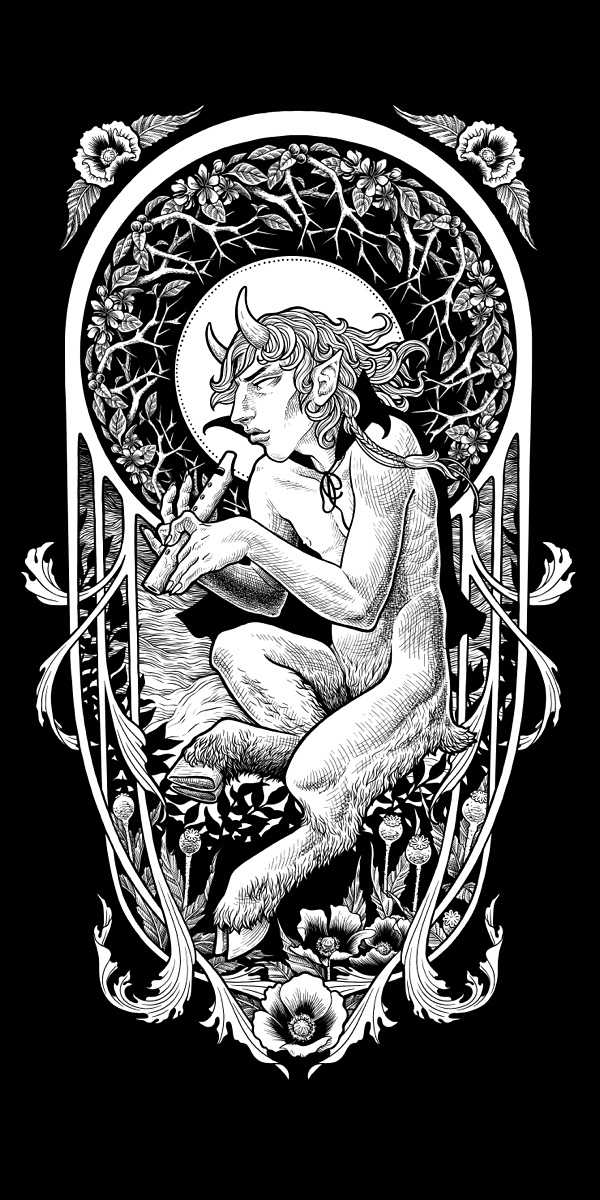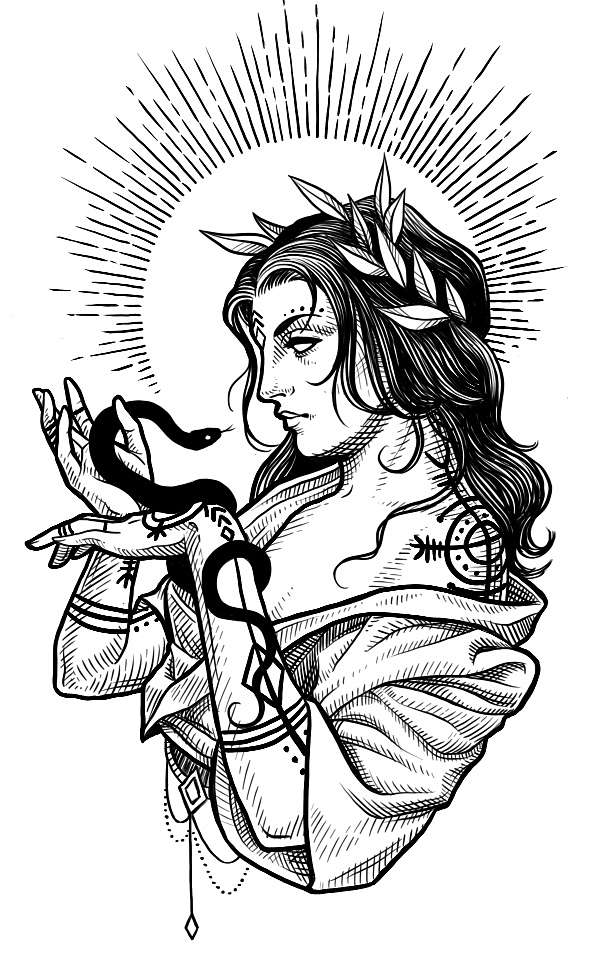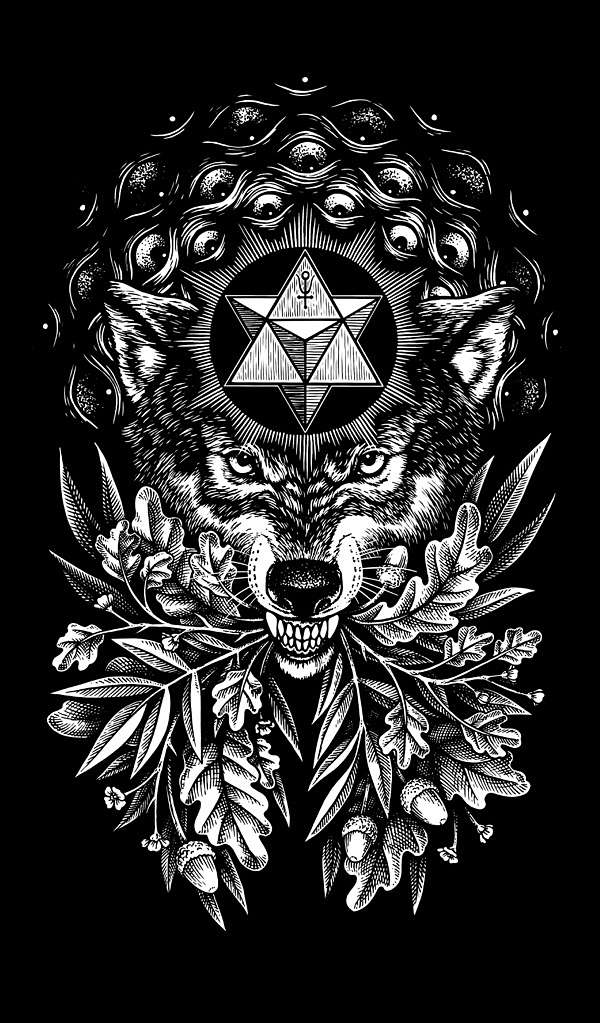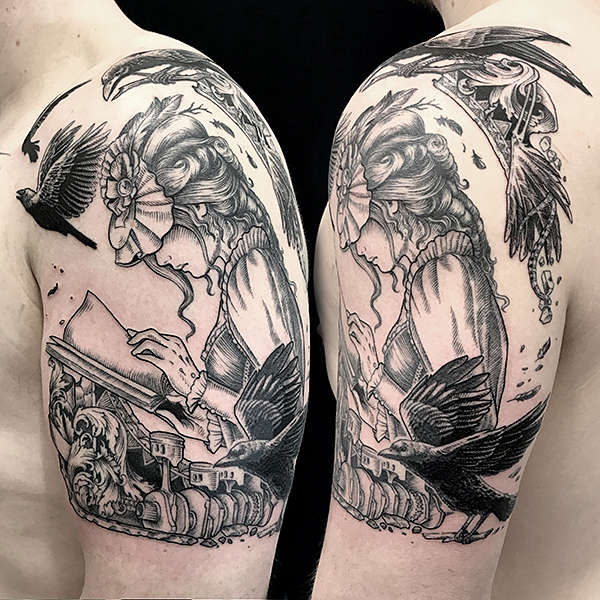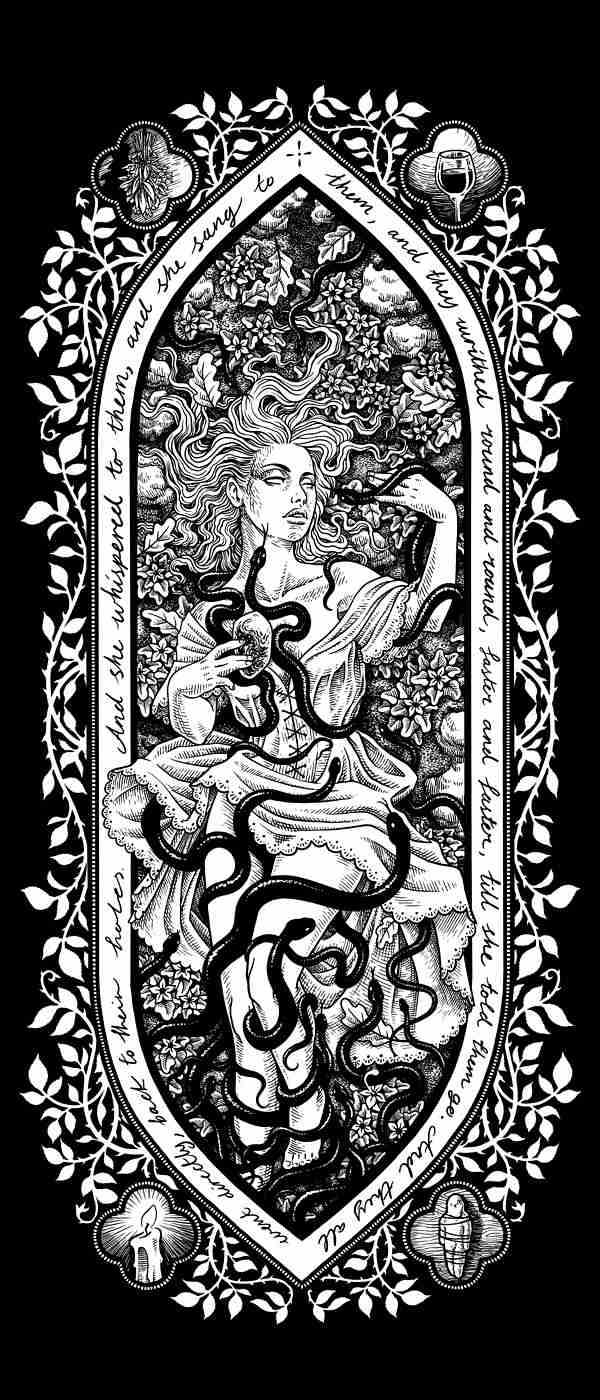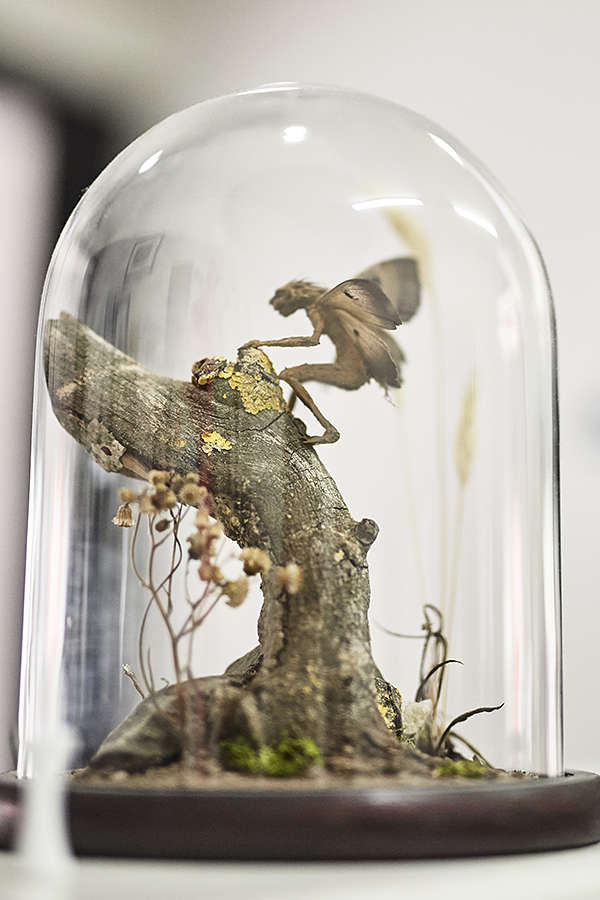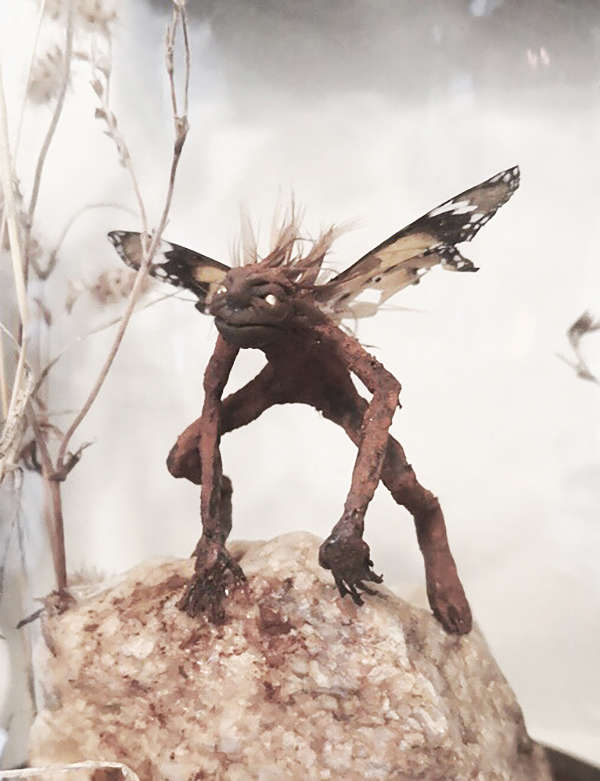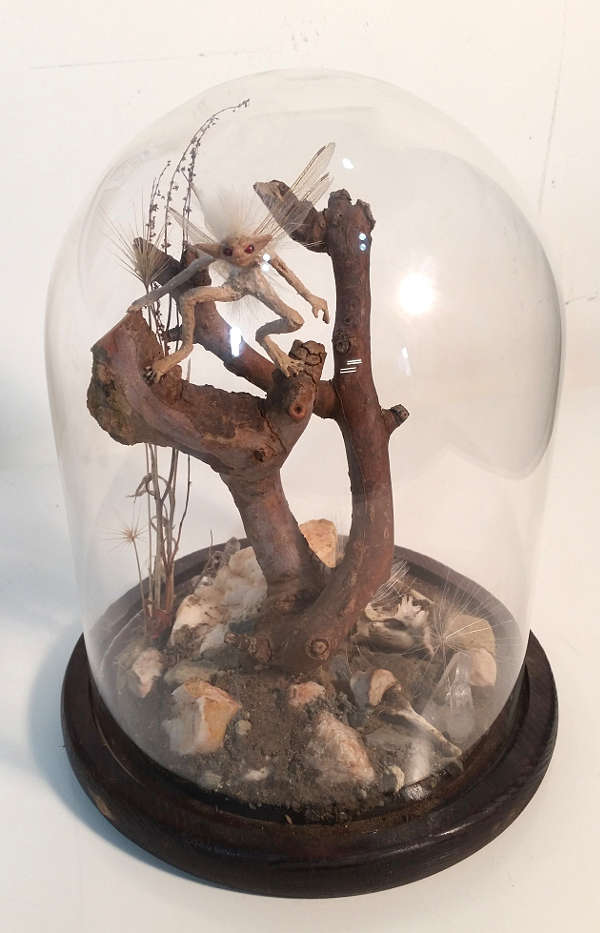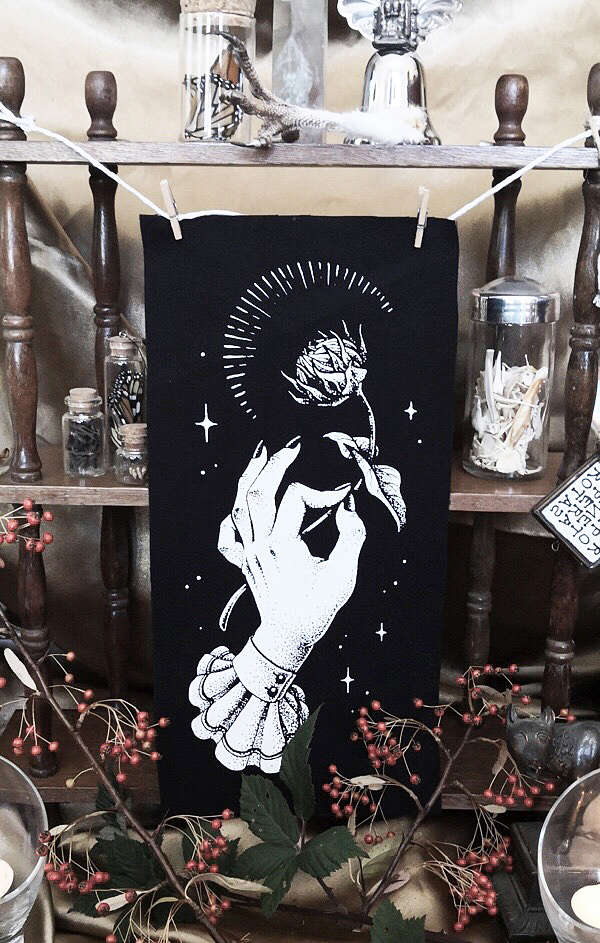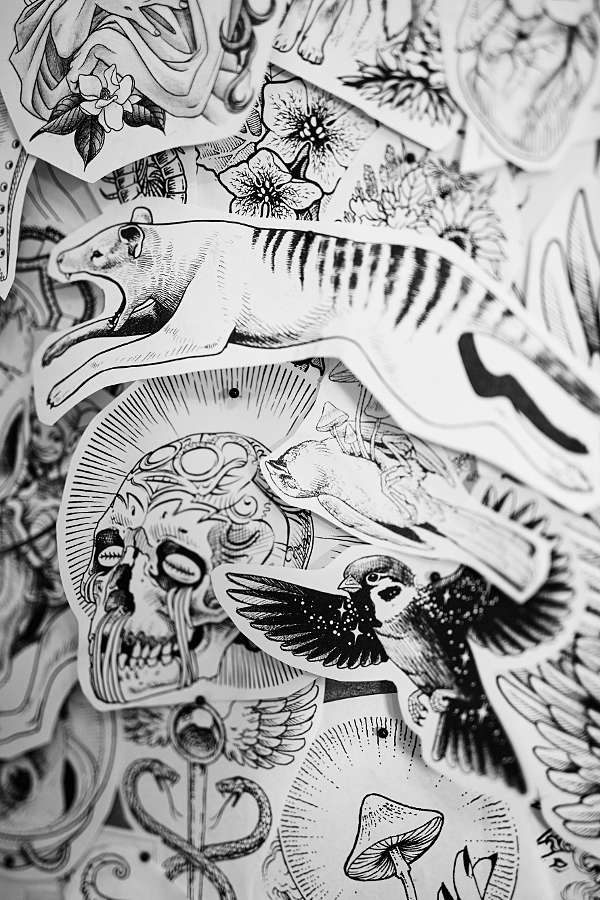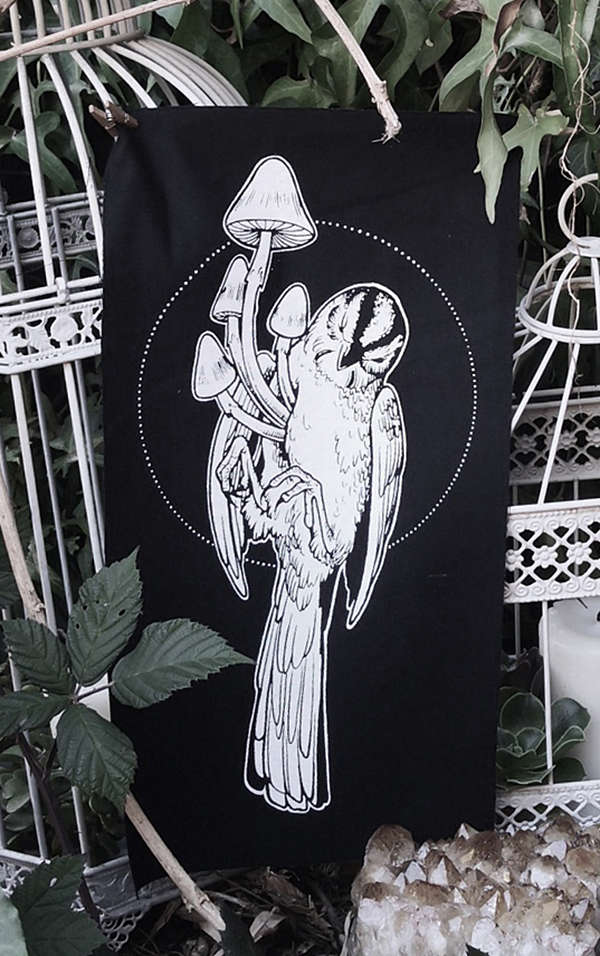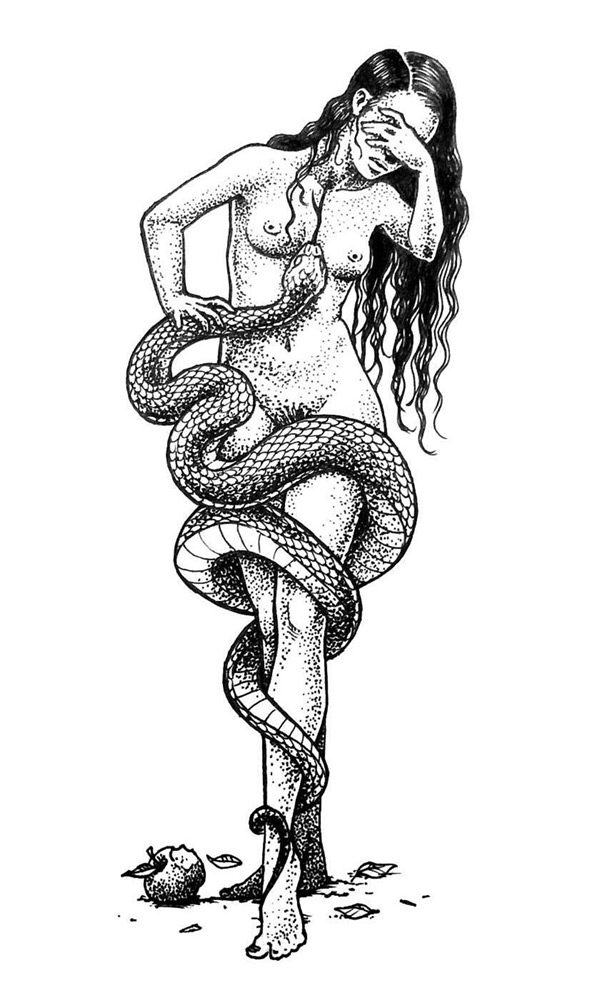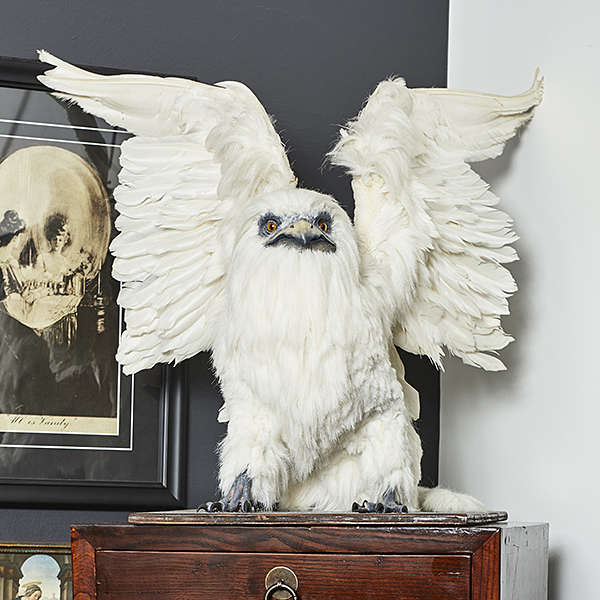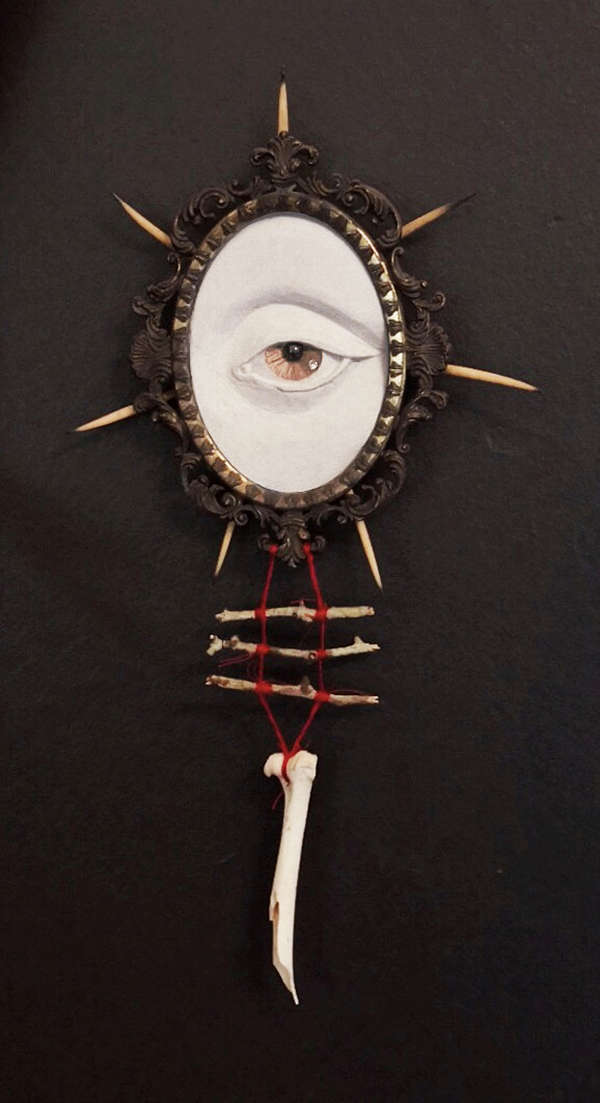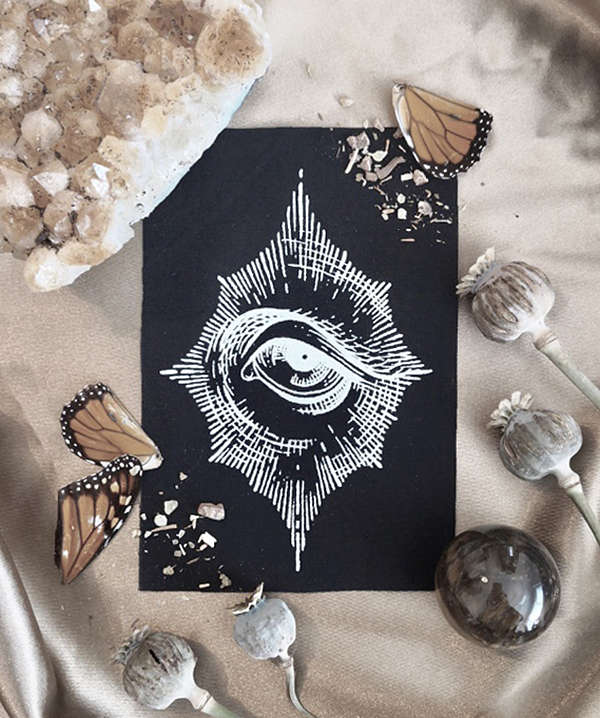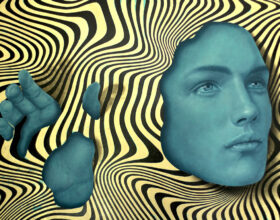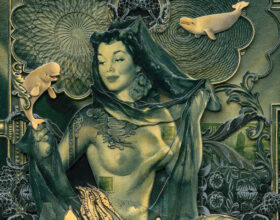Nickas Serpentarius, aka, Danica Serpentarius Morgan, is a contemporary tattoo artist, illustrator and sculptor whose work exists in the spaces in-between art and magic…
For as long as we have been conscious beings, the occult and art, have coexisted. The Book of the Dead, an ancient Egyptian artifact, is an early known example of the coexistence of art and magic. The pages are filled with images and spells that serve as a guide for those journeying to the underworld. Another well known example is the Tarot deck; a beautiful, visual example of art and magic coming together to serve as a tool of divination and guidance, some say the origins of tarot can be traced back to the ancient Egyptians. Interestingly, there is a current resurgence of the use of Tarot and many contemporary visual artists have created their own re-interpretations.
It is said that art offers a creative visualization of the unseen and the unconscious along with ancient knowledge and an illustration the desires of this world and those of us currently embodied within it. These visualisations can then be used as tools, or charms to connect, to communicate and to influence our surrounds and path.
With the rise of scientific knowledge and the technological age you could be forgiven for thinking that magic, as it is understood, would dissolve- but on the contrary, the practice and tradition of magic continues to thrive as we each seek connection and understandings of this world that transcend the conscious and the everyday. The occult, magic and art continue to coexist, claiming space in our contemporary world. Contemporary reimaginings of ancient myth and mythology, continue to be a part of their very magic- this ensures their survival. Through each new artist, new style, or new medium each story or piece of ancient knowledge remains alive, altered, but alive. Within each new interpretation lies a core truth… and as artists, on some level, we are each compelled to seek out this truth.
Interview with Nickas Serpentarius
What do you believe it means to be an artist and how did your creative path begin?
I guess it is not just enjoying art as a pastime or even technical skill but the pure compulsion to create; for me, specifically, the drive to express myself visually. I have never known a time where this wasn’t the way for me. I remember creating constantly as a child. In the more normal ways, with play-doh and crayons, but in more urgent ways in the playground at lunch and recess, creating sculptures out of the red wax from baby bel cheese and sheoak nuts, or spending hours building elaborate little fairy homesteads in the garden out of sticks, mud and leaves. I had a big jacket that I used to wear with massive pockets that I would fill with bits of junk I found. I used it as my emergency creation cache in case I was ever stuck bored somewhere.
Where did your interest into the occult begin and how does this spiritual practice intersect with your arts practice?
I used to see and experience a lot of weird stuff as a kid. The electromagnetic fields of people and objects, Shadowy figures that ‘weren’t there’, my dead cat’s ghost sitting on the washing machine. I come from a very academic, rational-materialist family though, so I learned to keep quiet about it all after being told again and again that it was all just my eyes playing tricks on me. I kind of semi-repressed this side of me but it always seeped through into my art. During my time at Paper Horse Studios {circa 2007-2009} I was doing a lot of street art and was involved in a lot of local Low-Brow group shows with the likes of Lisa King and Dan Withey. The images I was creating were all these very stylised spiritually ambiguous goddesses. I remember one punter at an exhibition asking why all the women I drew were disabled and blind. I initially thought it was funny as he was reading the pictures so literally, but the encounter caused me to do some soul searching on the roots of these motifs in my work. I realised that I was time and time again portraying very powerful looking women who were limbless and sightless although still possessing inner sight. I think they were representations of how I felt about the way humanity is interacting with the feminine earth mother energy of the planet. Nowadays, I use my art in my spiritual practice much more consciously, using it to anchor new information I am studying into my memory, and also as a form of devotional practice.
Your illustrative works have become living pieces through your tattoo work. How did your art practice find its way into tattoo work?
I had a funny realisation only last year that I have been trying to Frankenstein my art my entire career. Firstly through animation {making still images move thereby ‘giving them life’} then through my faux taxidermy {making things that look as though they once possessed life} and finally through tattooing {literally using live flesh as my canvas, therefore ‘bringing them into the flesh’}. Tattooing was originally supposed to function as a creative day job with which I could support myself whilst I chased my dreams of being a visual artist. I became kind of possessed by it though, and now I can’t imagine not tattooing. I am looking forward to stepping back into some more large scale sculptural works in 2020 though so stay tuned.
Marking skin with ink through tattoos is a practice steeped in cultural tradition and spirituality– can you share with us your thoughts on this, as a contemporary tattoo artist?
Tattooing is one of our oldest art forms as a species. We have been doing this to our meat puppets for possibly even as long as 50,000 years. It was {and indeed still is in indigenous traditions} used as a magical practice. Used to denote rank, mark rites of passage, venerate the dead and for healing. We don’t realise it because our cultural frame of reference is now different but still use it the same way today. Many people will get a tattoo for a family member when they pass over, or get inked to mark coming through a particular life event or phase of personal growth. I have definitely had many clients use tattooing to help them heal by reconnecting with a body part after medical trauma or poor body image. This disconnect from the spiritual, only acknowledging the material and quantifiable, is totally indicative of the current zeitgeist.
Your work, illustrative, print making, tattoo work and sculptures, is rich with symbolism- for you, what is the importance and power of symbolism?
Symbolism is one of my true obsessions. I seek symbolism and metaphor in everything. I believe that harnessing metaphor is one of the ways we can influence things in a non-physical sense. Perhaps this is one of the reasons I enjoy my work as a tattooist so much, as it seems to be an art form where people naturally want to pack as much meaning in as possible.
Archetypes from ancient mythology are a consistent narrative in your arts practice. What is it about these stories that interests you so? And why do you feel it is so important to keep these stories alive through a contemporary re-interpretation?
Storytelling is an important part of the human experience; it’s an interesting compulsion of our species. Myth, in particular, is fascinating to me. It is a vehicle for truth without actually being true. I love holding different mythologies up against each other to see where the through lines are. It is the points of similarity that most pique my interest. These are the archetypes and symbols that we should explore more closely as they are probably keys to understanding the deeper structure of reality.
You have previously noted that the process of creating, in and of itself, can be a practice of channeling or divination, especially with works like your incredible sculptures- can you discuss this creative process with us:
All art has some kind of transcendent quality, even if only to give form to the imaginal…
Although the works that I believe you are referencing are funnily enough, not pieces that I consider ‘art’ but charms. Once again, this is using symbolism and metaphor to create a ‘morphic resonance’ a term coined by Dr Rupert Sheldrake. So these pieces are made by cobbling together materials and iconography that has a long-standing cultural and folkloric association that maps to the desired outcome of the piece, and then of course, making that combination as beautiful as possible. I believe we live in an aesthetic universe and things that have a more aesthetically pleasing quality are more ‘in flow’ with the pattern.
Your most recent project “Psychöpomp- Exploring the numinous through art, aesthetic and culture” has been created to carve out a space where all of your intersecting interests collide. Firstly, can you discuss what a Psychöpomp is? And why this is an important narrative element in your new project?
A Psychöpomp is any spirit or God that acts as a guide to the underworld or realms of the dead. This is important to me as someone who has always been drawn to the darker side of things. Our aim with Psychöpomp is to use art, creativity and self expression to explore the Occult. We hope to move ourselves further along our own spiritual paths by immersing ourselves in our love of the strange. By sharing the treasures we unearth from the depths we hope to serve as a guide {a Psychöpomp if you will} to the realms of the subconscious, the imaginal; an inspiration to others who feel the call.
Our little endeavour is run by myself and Bianca Laws, and is still in its very infant stages, only being 6 months old. Currently we are offering hand made patches and wall hangings all with esoteric flavours, but plan to add more things as time progresses, such as faux taxidermy faeries and protection charms. Witchcraft supplies, herbs and more. We hope that Psychöpomp will become not only a platform for sharing occult inspired art, but a little melting pot of ideas, a community space for sharing interesting bits of knowledge, daily practices and ponderings on the numinous. We both work full time in our various pursuits so it is a slow start but if you want to watch it all unfold you can follow us along on Instagram @psychopomp.au.
Your illustrative style is beautifully referential of Albrecht Dürer and the etching genre of his time. What is it about this genre that you are drawn to?
Firstly, it is a very natural style for me to work in that plays to my artistic strengths, but I think that I am someone who does not find much beauty in the aesthetic of modern times. Minimalism, clean lines and primary colours hold little joy for me. I am more of a ‘go for baroque’, ‘more is more’ kinda gal. I long for a new creative renaissance, an end to the devils of consumerism and planned obsolescence. I long for a return to times when craftspeople poured their best into even the most mundane of objects, for they were built to last, and therefore worth putting love and care into.
In some of your most recently created works there is a beautiful contrast between life and death, the old and the new, and black and white. For example, your dead bird illustration springing new fungi life, or the white prints on black fabric- why do you think you are drawn to contrast and what do you think it is communicating in your work?
I am interested in the in-between spaces, the liminal, as it is in these places that magic dwells. The war shaman Geronimo knew this and used the contrast between day and night – twilight- to his advantage, defeating his enemies despite lesser numbers by harnessing the twilights power to create illusion.
Another boundary is that which lies between life and death. In our current culture, death is widely feared and reviled. For me this has never been the case, perhaps because I have always believed that consciousness survives death there has never been anything to fear. It is just a continuation of the journey.
Death is just another liminal space, a boundary or ‘hedge’ to cross.
.
Along our creative path, as artists, while experimenting with different techniques and materials we each often tell and retell the same narrative- what do you feel is the overarching narrative you are telling with your work?
There is definitely a motif of exploring feminine power. I am particularly drawn to depicting powerful outsider women from myth, fable and literature. Alongside that there is a deeper and more constant current of symbolism. ‘This world may be but a set of symbols for a higher form of existence’, and it is that puzzle that draws me in again and again.
What do you know to be true of the world and how is this truth expressed through your art and occult practice?
I personally believe that all is consciousness, all is the singularity within the void and it is the movement of this singularity that creates the waveform that forms all of existence. Time is non-linear and the universe is fractal and infinite. There is no real separation between things, it is all a spectrum. Things are not isolated ‘blobs’ sitting around in a dead mechanical universe. All is constantly in flux and it is better to see things as lines. Because of this understanding of the nature of reality I see the nonphysical as a spectrum, therefore the land of dreams and the land of the dead have bleed through, and of course there is bleed through into our material realm too, the trick is to learn and recognise the through lines between similar parts of the pattern and figure out how to harness that knowledge to our own benefit.
This is, I suppose the core of my practice. My constant attempt to ‘see’ the word about me more clearly. I am always on the hunt for new ideas to plug into my metaphysical map of reality. Trying to tweak the odds using sympathetic magic, symbolism and art. To reform the pattern of reality around me to the best of my abilities.
Terrence McKenna once said “What we call reality is, in fact, nothing more than a culturally sanctioned and linguistically reinforced hallucination.” and I feel that there is a truth to this. So I guess my mission is to break out of the current cultural hallucination and see through the veil. Let’s all do our part to re-enchant the world.
.


